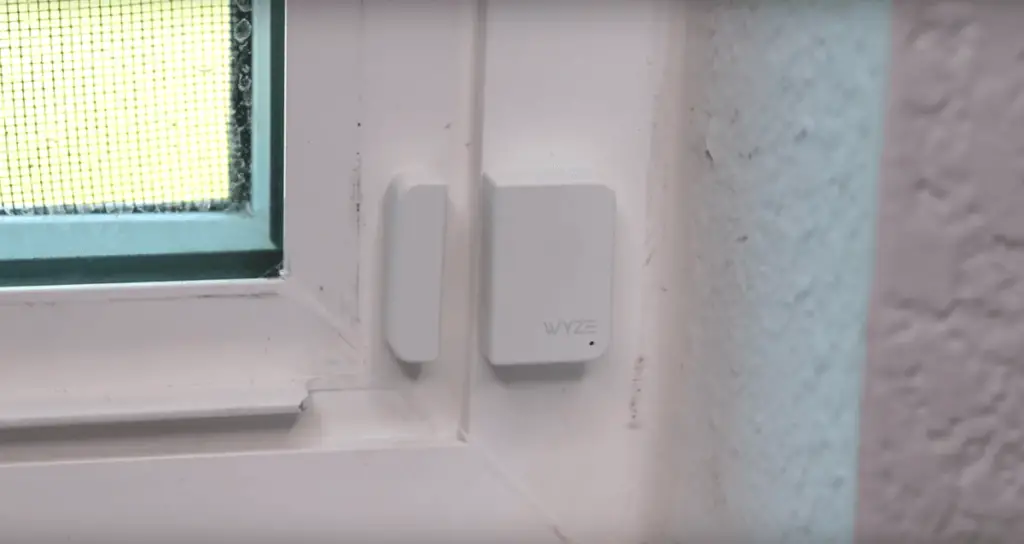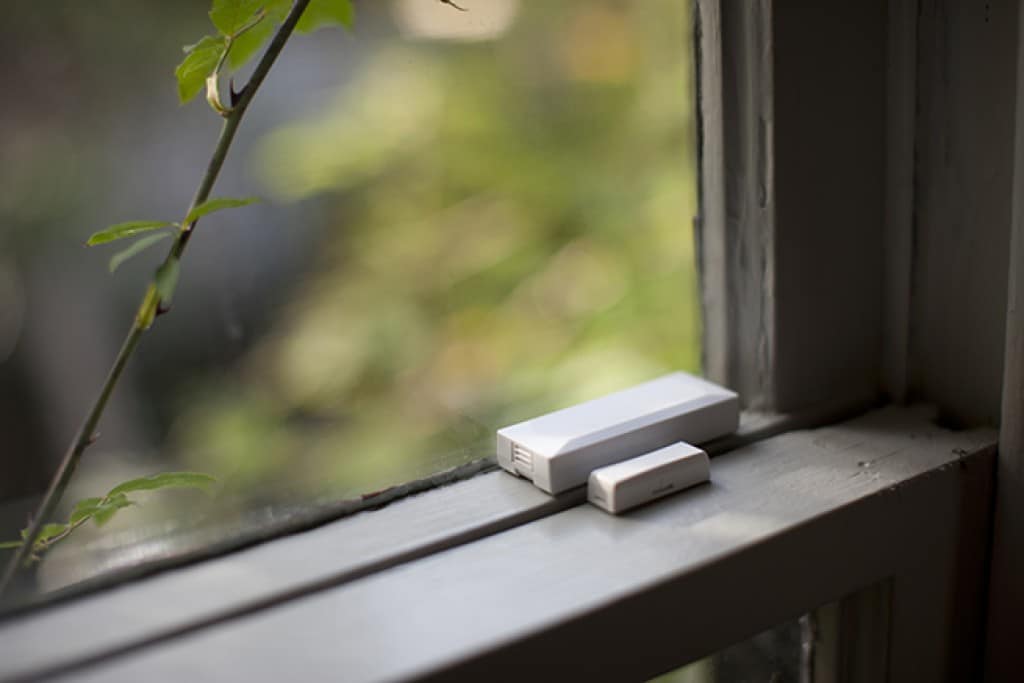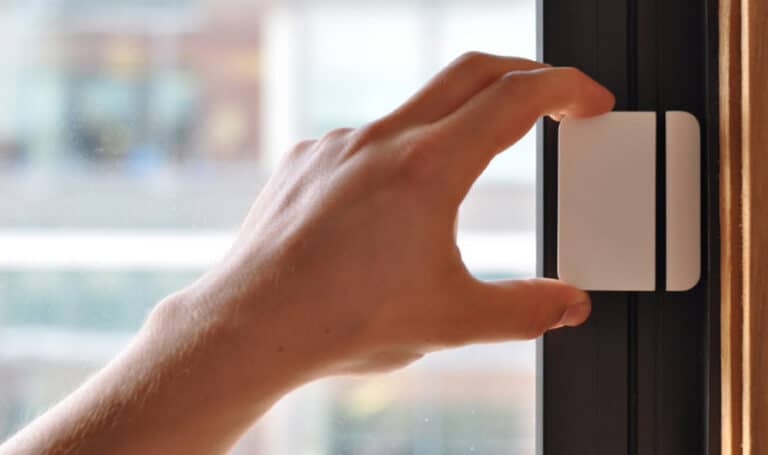Introduction
How Do Garage Door Safety Sensors Work: Garage doors are an essential part of our homes, providing security and convenience. However, they can also pose a safety risk, especially if they are not equipped with the necessary safety features. One of the most important safety features of a garage door is the safety sensor. These sensors play a crucial role in preventing accidents and injuries by detecting obstacles in the door’s path and stopping it from closing.
Garage door safety sensors work by using infrared technology to detect objects in the door’s path. They consist of two sensors, one on each side of the door, positioned near the floor. One sensor emits an infrared beam, while the other receives it. When the beam is interrupted by an object, such as a person, pet, or vehicle, the sensors send a signal to the garage door opener to stop the door from closing.
The safety sensors are typically installed a few inches above the ground to ensure that they can detect any objects that may be in the way. They are aligned so that the infrared beam is uninterrupted when the door is fully closed. If the beam is interrupted while the door sensor is closing, the sensors immediately send a signal to the opener to reverse the door’s direction and prevent it from closing on the object.
Garage door safety sensors are designed to provide an extra layer of protection and prevent accidents. They are especially important in households with children or pets, as they can prevent them from getting trapped under a closing garage door. Additionally, they can also protect vehicles from damage by stopping the door from closing on them.

How does garage door safety work?
Garage door safety is a crucial aspect of any garage door system. It ensures the protection of people and property by preventing accidents and injuries that may occur due to the operation of the garage door. Understanding how garage door safety works is essential for homeowners and garage door users to ensure the safe and efficient functioning of their garage doors.
One of the key components of garage door safety is the photoelectric sensors. These sensors are typically installed near the bottom of the garage door tracks and emit an invisible beam of light. When this beam is interrupted by an object or person. The sensors detect the obstruction and signal the garage door opener to stop or reverse the door’s movement. This prevents the door from closing on someone or something, reducing the risk of accidents and injuries.
Another important safety feature is the auto-reverse mechanism. This mechanism is designed to detect resistance when the garage door is closing. If the door encounters an obstruction, such as a person or object, it automatically reverses its direction and opens back up. This feature is particularly useful in preventing accidents, especially with children or pets who may unknowingly be in the path of the closing door.
Additionally, garage doors are equipped with manual release mechanisms. These mechanisms allow the door to be manually opened or closed in case of a power outage or malfunction. This ensures that individuals are not trapped inside or outside the garage in such situations, enhancing safety and convenience.
Furthermore, garage door safety is also dependent on regular maintenance and inspections. It is important to keep the garage door and its components in good working condition to ensure optimal safety. This includes checking the sensors, lubricating moving parts, and addressing any issues or malfunctions promptly.
Which type of sensor is usually used in a garage door?
When it comes to garage doors, safety is of utmost importance. That’s why garage doors are equipped with sensors to ensure the protection of people and property. The type of sensor commonly used in garage doors is known as the photoelectric sensor. This sensor plays a crucial role in preventing accidents and ensuring smooth operation of the garage door.
The photoelectric sensor, also known as a photo eye sensor. Works by emitting a beam of infrared light across the garage door opening. It consists of two main components: a transmitter and a receiver. The transmitter emits the infrared beam, while the receiver detects the presence or absence of the beam.
The photoelectric sensor is typically installed near the bottom of the garage door, on either side of the opening. When the garage door is closing, the infrared beam is uninterrupted. However, if an object or person enters the path of the beam. It is interrupted, and the sensor sends a signal to the garage door opener to stop or reverse the door’s movement.
This safety feature is crucial in preventing accidents, especially with children or pets who may unknowingly be in the path of a closing garage door. By detecting any obstruction, the photoelectric sensor ensures that the door does not close on anything or anyone, reducing the risk of injury or damage.
In addition to its safety function, the photoelectric sensor also helps in the smooth operation of the garage door. If the sensor detects any misalignment or malfunction. It can prevent the door from closing or opening, alerting the homeowner to the issue. This allows for timely repairs and maintenance, ensuring the garage door operates efficiently.
How do garage door sensors get power?
Garage door sensors play a crucial role in ensuring the safety and functionality of garage doors. These sensors are responsible for detecting any obstructions or objects in the path of the door, preventing accidents and damage. One common question that arises is how these sensors get their power. Understanding the power source of garage door sensors is essential for troubleshooting and maintenance purposes.
Garage door sensors typically get their power from the main electrical supply of the house or building. They are usually wired directly into the electrical system, allowing them to receive a constant flow of power. This ensures that the sensors are always operational and ready to detect any obstacles in the path of the garage door. The power supply for the sensors is typically low voltage, ranging from 12 to 24 volts, which is sufficient for their operation.
Garage Door Sensors
One of the main reasons for using low voltage power for garage door sensors is safety. Low voltage systems are less likely to cause electrical shocks or pose a risk of electrocution. This is especially important considering that garage door sensors are often located in areas where they may come into contact with water or moisture. By using low voltage power, the risk of electrical accidents is minimized.
Garage door sensors are usually connected to a power source through a transformer. The transformer converts the high voltage from the main electrical supply into the low voltage required by the sensors. This ensures that the sensors receive a consistent and regulated power supply. The transformer is typically installed near the garage door opener or control panel, allowing for easy access and maintenance.
In some cases, garage door sensors may also be powered by batteries. This is particularly common in situations where there is no direct electrical connection available or as a backup power source in case of a power outage. Battery-powered sensors are typically wireless and rely on batteries to provide the necessary power for their operation. It is important to regularly check and replace the batteries in these sensors to ensure they continue to function properly.
How are door sensors powered?
Door sensors are an essential component of security systems, as they detect when a door is opened or closed. These sensors are typically powered by various methods, depending on the specific type and design. The power source for door sensors can vary from batteries to wired connections, and each method has its advantages and limitations.
Battery-powered door sensors: Many door sensors are powered by batteries, which provide a convenient and portable power source. These sensors often use standard alkaline batteries, which are readily available and easy to replace. Battery-powered door sensors are ideal for situations where it is difficult or impractical to run electrical wiring, such as in rented properties or older buildings. However, the downside of battery-powered sensors is that the batteries need to be regularly checked and replaced to ensure the sensor remains operational.
Wired door sensors: Some door sensors are powered by a wired connection to an electrical outlet or a security system panel. These sensors typically require professional installation, as they need to be connected to the electrical wiring of the building. Wired door sensors offer a reliable and continuous power source, eliminating the need for battery replacements. However, they may not be suitable for all situations, especially in areas where running electrical wiring is challenging or not allowed.
Solar-powered door sensors: In recent years, solar-powered door sensors have become increasingly popular. These sensors have a built-in solar panel that converts sunlight into electrical energy, which is used to power the sensor. Solar-powered door sensors are environmentally friendly and can be an excellent option for outdoor applications where access to electrical outlets or battery replacements is limited. However, they may not be as reliable in areas with limited sunlight or during extended periods of cloudy weather.
What voltage is a garage door sensor?
The voltage of a garage door sensor typically depends on the specific model and manufacturer. However, most garage door sensors operate on a low voltage system, typically around 12 to 24 volts. This low voltage is necessary to ensure the safety of users and prevent any potential electrical hazards.
Garage door sensors are an essential component of the garage door system. As they are responsible for detecting any obstructions or objects in the path of the door. When an object is detected, the sensor sends a signal to the garage door opener to stop or reverse the door’s movement, preventing any accidents or damage.
Garage Door
Since garage door sensors are designed to be in constant operation, they require a continuous power supply. This is where the low voltage system comes into play. By operating on a low voltage, the sensors can remain powered on without consuming excessive energy or posing a risk to users.
It is important to note that the voltage of a garage door sensor may vary depending on the specific model and manufacturer. Some sensors may operate on 12 volts, while others may require 24 volts. It is crucial to consult the manufacturer’s specifications or the user manual to determine the exact voltage requirements for a particular garage door sensor.
In addition to the voltage, it is also essential to ensure that the garage door sensor is properly installed and maintained. Regular inspections and cleaning can help prevent any issues or malfunctions that may arise. If there are any concerns or problems with the garage door sensor. It is recommended to seek professional assistance to ensure proper functioning and safety.
Sensors
The purpose of garage door safety sensors is to prevent accidents and injuries by detecting obstacles in the path of a closing garage door. These sensors are designed to ensure that the garage door does not close if there is something or someone in its way. They provide an added layer of protection and help to prevent accidents that could result in serious harm or damage.
Garage door safety sensors work by emitting an invisible beam of light across the opening of the garage. When this beam is interrupted by an object or person. The sensors send a signal to the garage door opener to stop the door from closing. This technology is highly effective in preventing accidents and has become a standard feature in modern garage door systems.
Overall, the purpose of garage door safety sensors is to prioritize the safety of individuals and property. By detecting obstacles and preventing the door from closing on them. These sensors help to minimize the risk of accidents and injuries. It is important to ensure that garage door safety sensors are properly installed and maintained to ensure their effectiveness in keeping everyone safe.
How do garage door safety sensors detect obstacles?
Garage door safety sensors use a combination of infrared technology and photoelectric sensors to detect obstacles in the path of a closing garage door. These sensors are typically installed on either side of the garage door, near the bottom. When the garage door is closing, an infrared beam is emitted from one sensor to the other. If this beam is interrupted by an object or person. The sensors immediately send a signal to the garage door opener to stop and reverse the door’s movement.
The photoelectric sensors work by emitting an invisible beam of light. When this beam is broken by an obstacle, such as a car or a person. The sensors detect the interruption and trigger the safety mechanism. This technology is highly effective in preventing accidents and injuries caused by garage doors closing on people, pets, or objects.
What happens when a garage door safety sensor detects an obstacle?
When a garage door safety sensor detects an obstacle, it triggers the door to stop closing and reverse its direction. This is a crucial safety feature that helps prevent accidents and injuries. The sensors work by emitting an invisible beam of light across the garage door opening. If anything interrupts this beam while the door is closing, such as a person, pet, or object. The sensors immediately send a signal to the garage door opener to stop the door from closing and reverse it.
This quick response is essential in ensuring the safety of anyone or anything that may be in the path of the closing door. By detecting obstacles, the sensors prevent the door from accidentally closing on someone or something, which could cause serious harm or damage. The reversal of the door’s direction allows the obstacle to be cleared before the door can continue closing.
Garage door safety sensors are designed to provide an added layer of protection and peace of mind for homeowners. They are particularly important in households with children or pets who may not always be aware of the potential dangers of a closing garage door. By automatically detecting obstacles and preventing the door from closing on them. These sensors help reduce the risk of accidents and injuries.
Can garage door safety sensors be installed on any type of garage door?
Yes, garage door safety sensors can be installed on any type of garage door. These sensors are designed to detect obstacles in the path of the garage door and prevent it from closing if an object or person is detected. They are an essential safety feature that helps to prevent accidents and injuries.
Garage door safety sensors work by emitting an invisible beam of light across the opening of the garage door. If this beam is interrupted by an object or person. The sensors will detect the obstruction and send a signal to the garage door opener to stop the door from closing. This ensures that the door will not accidentally close on someone or something, reducing the risk of injury or damage.
Whether you have a traditional overhead garage door, a roll-up door, or a sliding door. Garage door safety sensors can be installed to enhance the safety of your garage. It is important to choose sensors that are compatible with your specific type of garage door and to follow the manufacturer’s instructions for installation. By installing garage door safety sensors. You can have peace of mind knowing that your garage door will automatically stop and reverse if an obstacle is detected, providing an extra layer of protection for you, your family, and your belongings.

Conclusion
Garage door safety sensors play a crucial role in ensuring the safety and security of both people and property. These sensors work by using infrared technology to detect any obstructions or objects in the path of a closing garage door. When an object is detected, the sensors send a signal to the garage door opener. Causing it to reverse and prevent any potential accidents or damage.
One of the key components of garage door safety sensors is the transmitter and receiver. The transmitter emits an infrared beam, while the receiver detects the beam. When the beam is interrupted by an object, such as a person, pet, or vehicle, the receiver sends a signal to the opener to stop and reverse the door’s movement. This mechanism ensures that the door does not close on anything or anyone in its path.
Another important feature of garage door safety sensors is their ability to self-test and troubleshoot. Most modern sensors are equipped with a self-diagnostic system that constantly checks for proper functioning. If any issues are detected, such as misalignment or a faulty sensor. The system will alert the user through flashing lights or audible signals. This feature allows homeowners to quickly identify and resolve any problems, ensuring that the sensors are always in optimal working condition.
Garage door safety sensors are an essential component of any garage door system. They use infrared technology to detect objects in the path of a closing door and send signals to the opener to prevent accidents or damage. With their self-testing and troubleshooting capabilities, these sensors provide an added layer of security and peace of mind for homeowners. It is important for individuals to regularly check and maintain their garage door safety sensors to ensure their proper functioning and effectiveness in preventing accidents.

